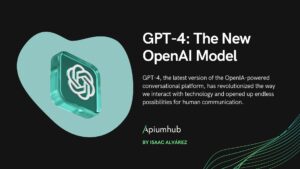Table of Contents
Introduction
User interfaces (UIs) have come a long way since the dawn of computing. The way we interact with machines has evolved significantly over the decades, driven by advancements in technology and a desire to make technology more accessible and intuitive. From the early days of command-line interfaces to the graphical user interfaces (GUIs) that dominate our computers and smartphones today, and now to emerging technologies like voice and gesture control, this article explores the fascinating journey of UI evolution.
The Development of Graphical User Interfaces (GUIs)
The Birth of the Command Line
In the early days of computing, user interaction was primarily text-based through command-line interfaces (CLI). Users had to type specific commands to perform tasks, which required memorization and familiarity with complex syntax. The CLI was efficient for experienced users but posed a significant barrier to entry for novices.
The GUI Revolution
The GUI revolution began in the 1970s and 1980s with pioneers like Xerox PARC and Apple’s Lisa and Macintosh. GUIs introduced a paradigm shift by representing information and actions graphically, using icons, windows, and pointing devices like the mouse. This made computers more accessible to a broader audience, as users could now interact with technology by simply clicking icons and dragging files.
The Rise of Microsoft Windows
Microsoft Windows, introduced in the late 1980s, played a pivotal role in popularizing GUIs. Windows brought multitasking, better graphics, and an extensive ecosystem of applications to personal computers. The rivalry between Microsoft Windows and Apple’s Mac OS contributed to rapid GUI refinement and innovation.
Modern GUIs and Touchscreens
The introduction of touchscreens, most notably with Apple’s iPhone in 2007, marked another significant milestone. Touchscreens extended the GUI concept to mobile devices, making interaction even more intuitive. Today, smartphones, tablets, and even some laptops rely heavily on touchscreen GUIs, providing seamless user experiences.
Voice Control: The Next Frontier

Emergence of Voice Assistants
Voice-controlled user interfaces, powered by natural language processing (NLP) and machine learning, have gained immense popularity with the advent of voice assistants like Apple’s Siri, Amazon’s Alexa, and Google Assistant. These systems enable users to interact with devices and services by speaking commands and asking questions.
Expanding Beyond Smart Speakers
Voice control has extended beyond smart speakers into various applications, such as automotive infotainment systems, smart home devices, and even healthcare. The convenience of using voice to control technology has made it a compelling choice, especially in scenarios where touch-based interaction may be cumbersome or unsafe.
Challenges and Future Prospects
Despite its promise, voice control faces challenges like accuracy, privacy concerns, and potential misunderstandings of user intent. Nonetheless, ongoing research and development in AI and NLP are steadily improving these systems, paving the way for a future where voice interfaces play an increasingly central role in human-computer interaction.

Gesture Control: A Touchless Experience
Leap Motion and Kinect
Gesture control, also known as motion control, has gained attention with technologies like Leap Motion and Microsoft Kinect. These systems use cameras and sensors to detect hand and body movements, allowing users to interact with computers and gaming consoles without physical contact.
Applications in Gaming and Beyond
Gesture control found early success in the gaming industry, enabling players to immerse themselves in virtual worlds through natural movements. Beyond gaming, gesture control has potential applications in healthcare, education, and industry, where touchless interaction can enhance safety and efficiency.
Challenges and Innovation
Gesture control technologies are still in the early stages of development, and they face challenges related to accuracy, recognition of complex gestures, and integration into everyday computing. However, ongoing research and innovation hold the promise of making gesture control a more mainstream and practical interface.
Conclusion
The evolution of user interfaces from the command line to graphical user interfaces and now to voice and gesture control reflects our constant drive to make technology more accessible, intuitive, and human-centric. Each phase of this evolution has brought its own unique set of challenges and opportunities, but they all share a common goal: to empower users to interact with technology effortlessly.
As we move forward, it’s likely that we will see further convergence and integration of these interface types, creating seamless user experiences that adapt to our needs and preferences. The future of user interfaces is an exciting frontier, driven by advancements in artificial intelligence, machine learning, and our ever-growing quest for more intuitive and immersive ways to interact with the digital world.
Author
-

I am a Computer Engineer by training, with more than 20 years of experience working in the IT sector, specifically in the entire life cycle of a software, acquired in national and multinational companies, from different sectors.
View all posts











